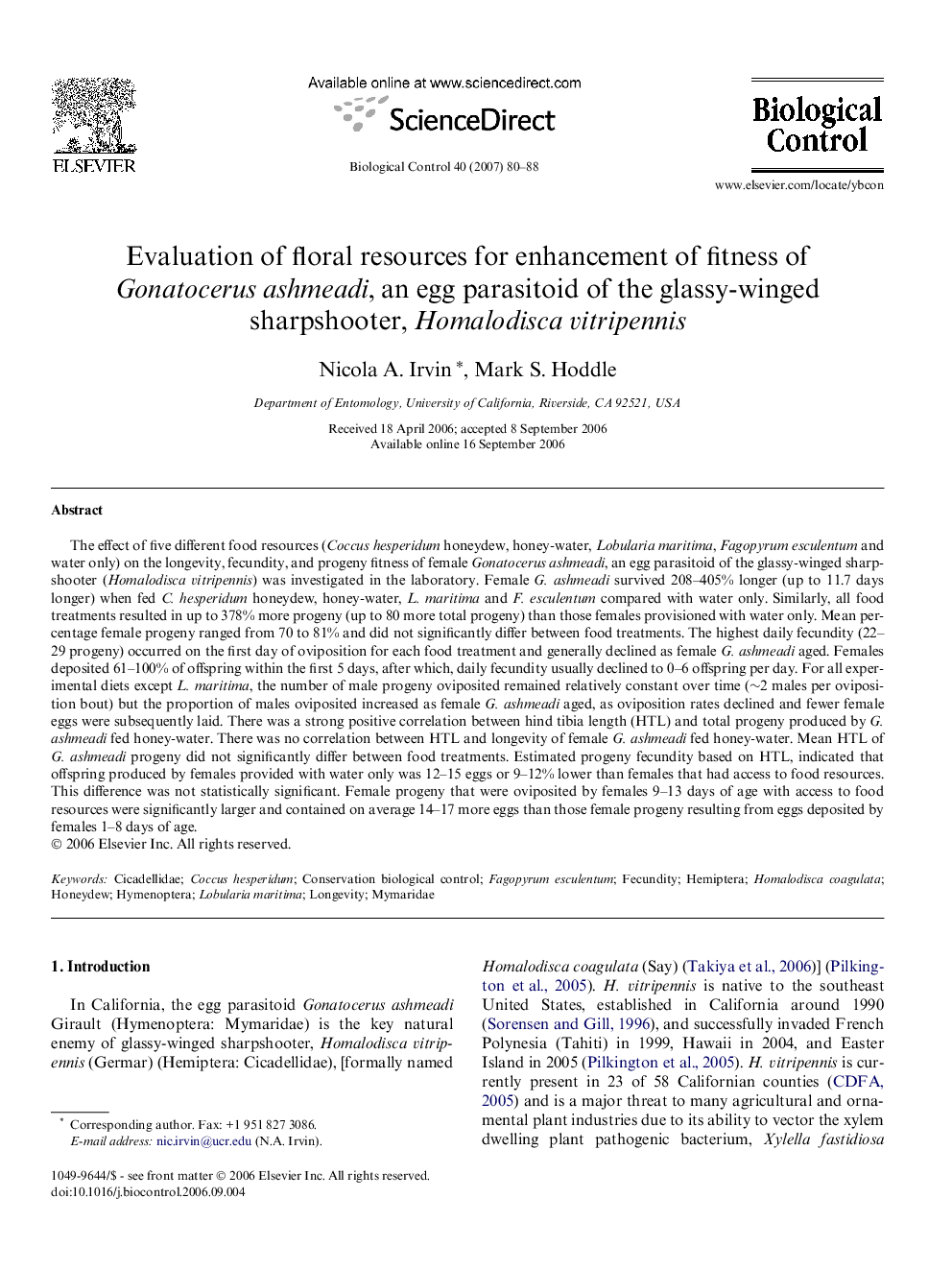| کد مقاله | کد نشریه | سال انتشار | مقاله انگلیسی | نسخه تمام متن |
|---|---|---|---|---|
| 4505305 | 1321137 | 2007 | 9 صفحه PDF | دانلود رایگان |
عنوان انگلیسی مقاله ISI
Evaluation of floral resources for enhancement of fitness of Gonatocerus ashmeadi, an egg parasitoid of the glassy-winged sharpshooter, Homalodisca vitripennis
دانلود مقاله + سفارش ترجمه
دانلود مقاله ISI انگلیسی
رایگان برای ایرانیان
کلمات کلیدی
Fagopyrum esculentumMymaridaeCicadellidaeLobularia maritimaLongevity - دیرزیستی یا طول عمرFecundity - باروری یا حاصلخیزیConservation biological control - حفاظت از کنترل بیولوژیکیHoneydew - عسلHomalodisca coagulata - همالودیس coagulataHemiptera - همیپتراHymenoptera - پردهبالان، هایمنوپتراCoccus hesperidum - کوکسی
موضوعات مرتبط
علوم زیستی و بیوفناوری
علوم کشاورزی و بیولوژیک
علوم زراعت و اصلاح نباتات
پیش نمایش صفحه اول مقاله

چکیده انگلیسی
The effect of five different food resources (Coccus hesperidum honeydew, honey-water, Lobularia maritima, Fagopyrum esculentum and water only) on the longevity, fecundity, and progeny fitness of female Gonatocerus ashmeadi, an egg parasitoid of the glassy-winged sharpshooter (Homalodisca vitripennis) was investigated in the laboratory. Female G. ashmeadi survived 208-405% longer (up to 11.7 days longer) when fed C. hesperidum honeydew, honey-water, L. maritima and F. esculentum compared with water only. Similarly, all food treatments resulted in up to 378% more progeny (up to 80 more total progeny) than those females provisioned with water only. Mean percentage female progeny ranged from 70 to 81% and did not significantly differ between food treatments. The highest daily fecundity (22-29 progeny) occurred on the first day of oviposition for each food treatment and generally declined as female G. ashmeadi aged. Females deposited 61-100% of offspring within the first 5 days, after which, daily fecundity usually declined to 0-6 offspring per day. For all experimental diets except L. maritima, the number of male progeny oviposited remained relatively constant over time (â¼2 males per oviposition bout) but the proportion of males oviposited increased as female G. ashmeadi aged, as oviposition rates declined and fewer female eggs were subsequently laid. There was a strong positive correlation between hind tibia length (HTL) and total progeny produced by G. ashmeadi fed honey-water. There was no correlation between HTL and longevity of female G. ashmeadi fed honey-water. Mean HTL of G. ashmeadi progeny did not significantly differ between food treatments. Estimated progeny fecundity based on HTL, indicated that offspring produced by females provided with water only was 12-15 eggs or 9-12% lower than females that had access to food resources. This difference was not statistically significant. Female progeny that were oviposited by females 9-13 days of age with access to food resources were significantly larger and contained on average 14-17 more eggs than those female progeny resulting from eggs deposited by females 1-8 days of age.
ناشر
Database: Elsevier - ScienceDirect (ساینس دایرکت)
Journal: Biological Control - Volume 40, Issue 1, January 2007, Pages 80-88
Journal: Biological Control - Volume 40, Issue 1, January 2007, Pages 80-88
نویسندگان
Nicola A. Irvin, Mark S. Hoddle,